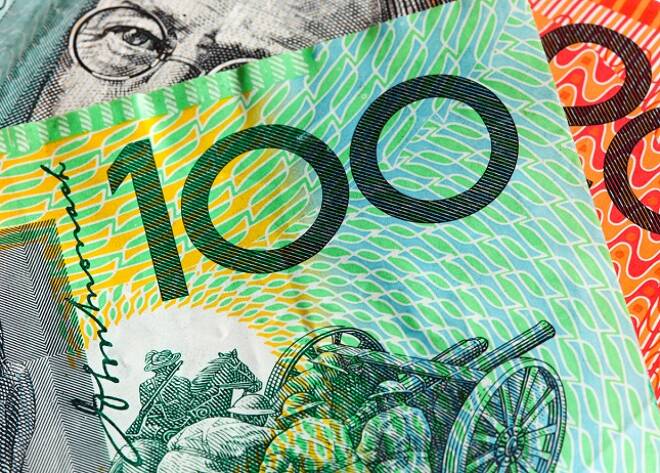Advertisement
Advertisement
AUD/USD and NZD/USD Fundamental Daily Forecast – RBA Will Cut Rates “If Needed”
By:
The focus now shifts to the U.S. economy as investors get the opportunity to react to a slew of economic reports ranging from the major retail sales data, and the minor import prices, capacity utilization, industrial production, business inventories and the NAHB housing market index.
The Australian and New Zealand Dollars are trading mixed on Tuesday with the Aussie feeling pressure from dovish Reserve Bank of Australia minutes of it July monetary policy meeting and the Kiwi garnering support from aggressive hedge fund buying related to the carry trade and the strong bets on a 25-basis point rate cut by the U.S. Federal Reserve in late July. Additionally, a report showed New Zealand consumer inflation met expectations.
At 07:25 GMT, the AUD/USD is trading .7032, down 0.0007 or -0.10% and the NZD/USD is at .6730, up 0.0011 or +0.16%.
New Zealand Dollar
The New Zealand Dollar rose after a report showed consumer inflation came in spot on expectations. This news weighed on the chances of a near-term rate cut by the Reserve Bank of New Zealand (RBNZ), making the Kiwi a more attractive currency.
The New Zealand Consumer Price Index came in at 0.6 percent for the June quarter and 1.7 percent for the year-ended June 2019, below the central bank’s 2 percent target level.
The CPI news is not likely to sway RBNZ policymakers one way or the other when it next meets in August. Those expecting the RBNZ to cut rates have no reason to change their view and the same goes for those who are predicting rates will remain unchanged.
Australian Dollar
The Minutes released earlier today from the Reserve Bank of Australia’s last meeting on interest rates on July 2 said the central bank will cut interest rates again, “if needed.”
“Lower interest rates would provide more Australians with jobs and assist with achieving more assured progress towards the inflation target,” the minutes said.
“The Board would continue to monitor developments in the labor market closely and adjust monetary policy if needed to support sustainable growth in the economy and the achievement of the inflation target over time.”
The RBA board noted that public sector investment in welfare schemes and infrastructure had helped boost first-quarter growth, a nudge to the newly re-elected government of Prime Minister Scott Morrison to do more.
RBA Governor Philip Lowe has openly called for more fiscal stimulus in recent public outings, but so far Morrison has downplayed the idea. This means the burden of reviving the economy falls on the RBA.
Daily Forecast
The focus now shifts to the U.S. economy as investors get the opportunity to react to a slew of economic reports ranging from the major retail sales data, and the minor import prices, capacity utilization, industrial production, business inventories and the NAHB housing market index.
Later in the session, investors will hear from Federal Reserve Chairman Jerome Powell and FOMC Member Evans.
About the Author
James Hyerczykauthor
James Hyerczyk is a U.S. based seasoned technical analyst and educator with over 40 years of experience in market analysis and trading, specializing in chart patterns and price movement. He is the author of two books on technical analysis and has a background in both futures and stock markets.
Advertisement
